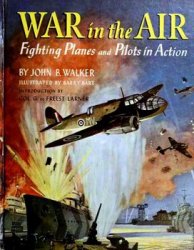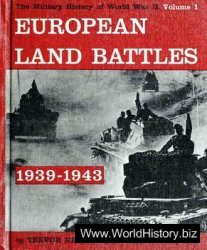However, a strong central political authority, which usually accompanied the triumph of the reforming party of the church elsewhere, did not exist in Ireland.
Murcertach MacLochlain of Ulster successfully challenged Turloch's son, Rory, for the high kingship. However, when MacLochlain was killed in a battle with some of his discontented subkings, O'Connor raised his claim again in 1166. This disorder gave the occasion for Dermot MacMurrough, the king of Leinster, who had supported the MacLochlain claims, to seek satisfaction against an antagonist, Tiernan O'Rourke, king of Breifne (Leitrim), whose wife MacMurrough had earlier abducted. He went abroad seeking allies, first in the person of Henry II, the king of England. Henry, whose domain included more than a third of France, and who was the great-grandson of William the Conqueror, had too full a plate at the time, including difficulties with his own churchman, Thomas a Becket. However, MacMurrough secured assistance from Richard FitzGilbert de Clare (Strongbow), a vassal of Henry's in Wales. He sent some Norman-Welsh knights with names like FitzGerald and Barry back to Ireland with MacMur-rough and came himself three years later, in 1170, with 1,200 men. Part of the price for his coming was the hand of MacMurrough's daughter, Eva.
FitzGilbert was a marcher lord in Wales, which meant that he and his like, while vassals of Henry II, had much greater autonomy than their counterparts in England because Wales was viewed as a separate territory, still in the process of being conquered. That autonomy would later worry Henry II when this vassal would have great success in Ireland, successfully defending MacMurrough and, upon his death, succeeding him as king of Leinster. This fact, coupled with the autonomy of Wales, caused Henry to suspect that FitzGilbert might turn his conquests in Ireland into something comparable to what Henry's great-grandfather, William the Conqueror, had done a century before. William had transformed himself from being the duke of Normandy and a vassal of the king of France into becoming king of England, which position would in time seriously challenge the French monarchy. Rather than allow history to repeat itself, Henry II decided to come to Ireland himself in October 1171, with a force of 3,500 men.
The Irish kings soon received Henry as "Lord of Ireland," who could protect them against the Norman-Welsh. Henry was able to base his claim to the title on a bull issued by Pope Adrian IV (the only English pope in history) authorizing him to assert his position over Ireland in order to control the undisciplined church of the island. Significantly, even Rory O'Connor, in the treaty of Windsor of 1175, which was promoted by Lawrence O'Toole (St. Lawrence O'Toole), the archbishop of Dublin, accepted Henry as his lord, while Henry acknowledged Rory's position as ard-ri, which gave him the authority to collect from the other Irish kings tributes that were due annually to Henry. Henry's minimal interest in Ireland, other than inhibiting his Norman-Welsh vassals there from becoming too powerful or independent, was manifest in his transfer of the lordship to one of his sons, John, while he was still a child. John made only two visits to Ireland: in 1185, 14 years before he acceded to the throne, and in 1210, when he sought to contain his barons in Ireland. He was less successful when he attempted to do the same four years later in England and had to acquiesce, in the Magna Carta, to baronial restrictions on his powers.
The visit to Ireland in 1210 by John was to be the last by an English king or "Lord of Ireland" until Richard II came over in 1394. This would suggest that
English authority over Ireland was more nominal than real. However, within Ireland, the power and domain of the Normans was extending itself. Theoretically the territory under their domain was to be governed by English law. That legal system and its various institutions, such as parliament, had developed in England at the behest of the kings. It replaced traditional, customary, or folk law with a mixture of feudal and royal law. Ultimately, the law and its institutions would be employed to restrain the king.
To some degree this constitutional evolution was copied in Ireland, including even the formation of an Irish parliament. But this occurred only in the areas under Norman control, and often only in a limited portion of that area, specifically the territory extending a few score miles out from Dublin. Significantly, the first Irish parliament, summoned in 1297, drew its members from the Normans and its will was effective only in the territory they controlled. Within that territory, areas were divided into shires or counties, as in England, with sheriffs, shire courts, and itinerant justices applying the "common law." There was substantial immigration of many Normans to Ireland, accompanied by significant development of towns, castles, cathedrals, and roads, as well as commerce.




 World History
World History









